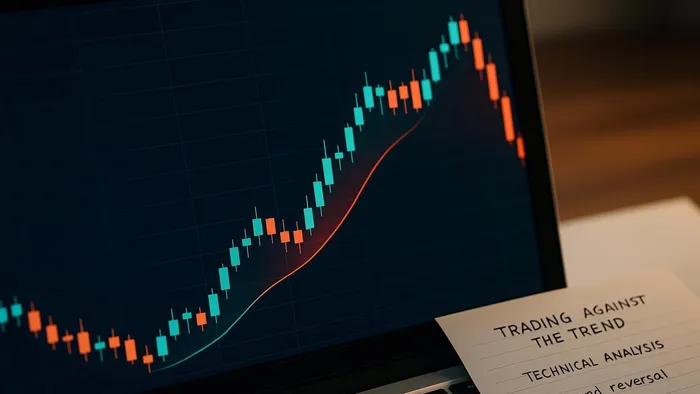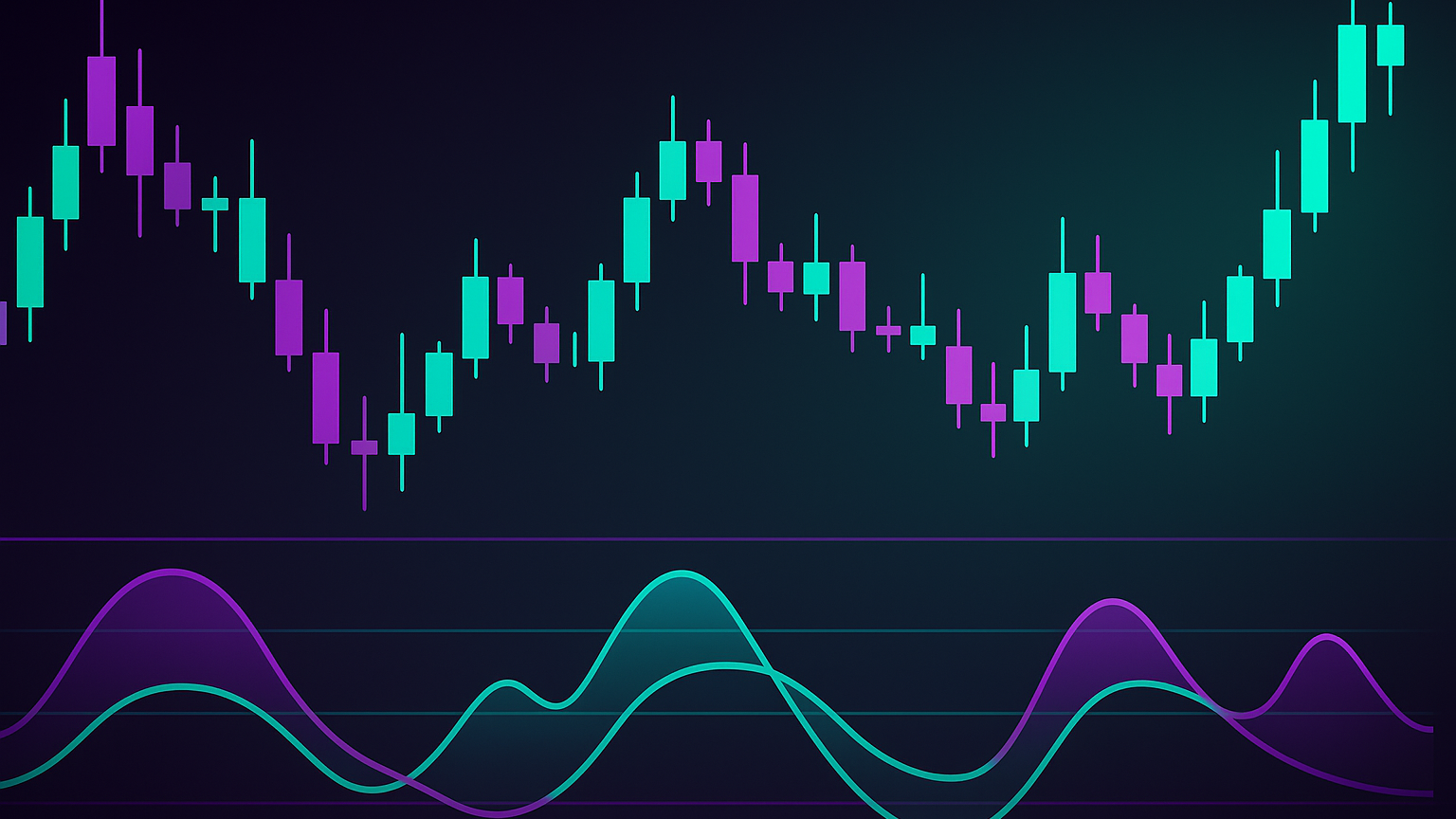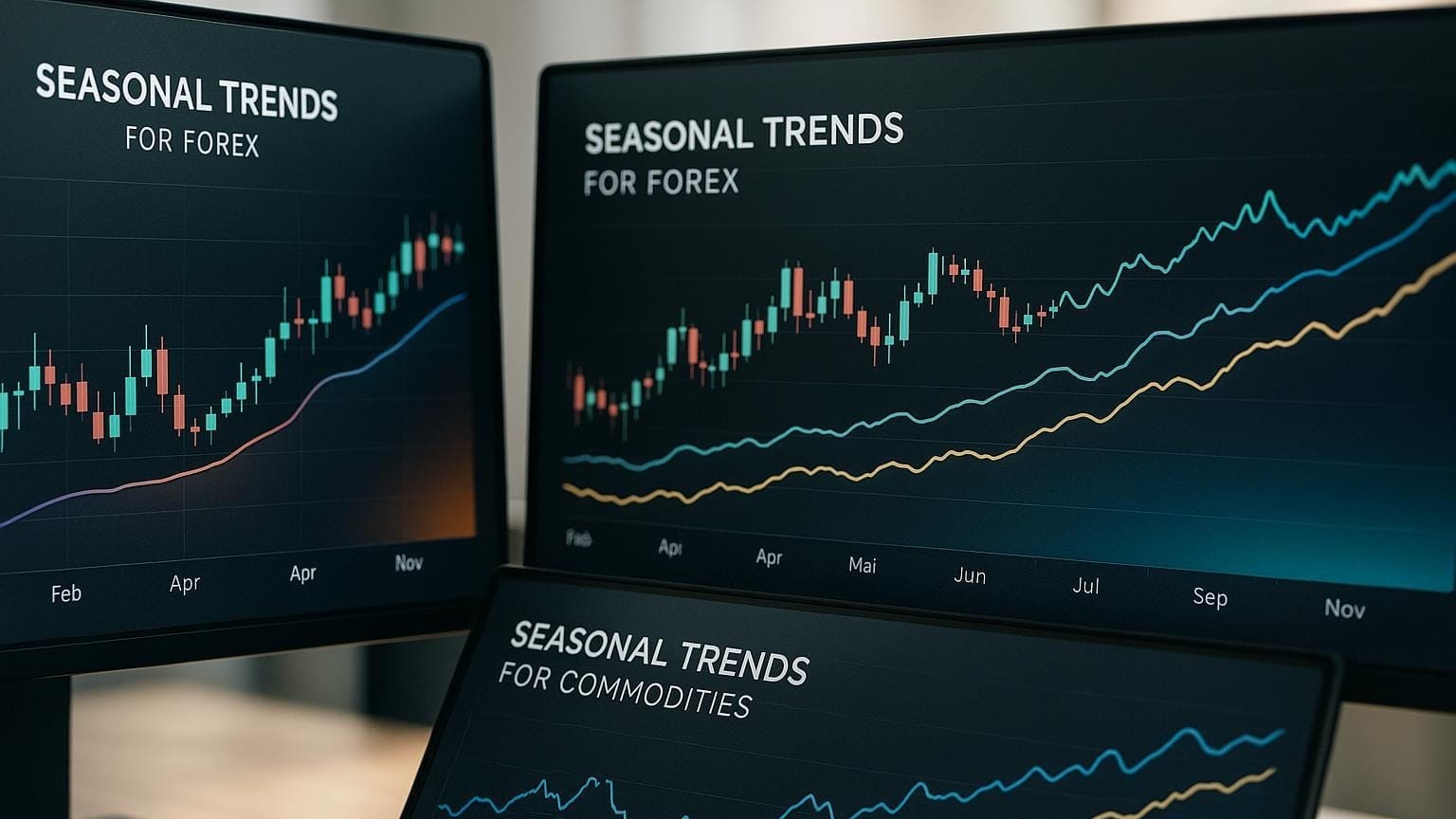Explore counter-trend trading strategies to profit from market reversals, focusing on technical analysis, risk management, and precision timing.
Counter-trend trading focuses on profiting from short-term market reversals by going against the prevailing trend. Unlike trend-following strategies, this approach requires precise timing, technical analysis, and strict risk management. Here's what you need to know:
- What It Is: Betting on price reversals during temporary market corrections.
- Why Do It: Potential for quick gains during overbought or oversold conditions and diversification of trading strategies.
- How It Works:
- Use chart patterns like double tops or bottoms, head and shoulders, and wedges to spot reversals.
- Monitor support and resistance levels and technical indicators (RSI, MACD, divergence).
- Leverage trusted chart-based toolkits for real-time analysis and backtesting.
Quick Tips for Success
- Risk Management: Limit risk to 1–2 percent of capital per trade with well-placed stop-loss orders.
- Timing Is Key: Combine multiple indicators and confirm signals across time-frames.
- Stay Disciplined: Stick to your strategy and avoid emotional decisions.
Counter-trend trading can be profitable but demands a structured plan, patience, and reliable resources to identify reversals and manage risk effectively.
The Guide to Trading Counter-Trend Setups
How to Spot Potential Reversal Points
Figuring out when a trend might be running out of steam means looking for clear signs that momentum is shifting. Skilled counter-trend traders rarely rely on a single indicator – they confirm setups with several methods. Below are chart patterns, levels, and momentum clues that often flag upcoming reversals.
Chart Patterns That Signal Reversals
Certain chart patterns are classic warnings of an imminent turn.
Double tops and double bottoms form “M” and “W” shapes and suggest buyers or sellers are losing control.
The head and shoulders pattern shows three peaks, the middle one the highest. A break of its neckline often confirms a downward reversal. The inverse pattern hints at an upside turn.
Rising and falling wedges flag exhaustion – a rising wedge typically precedes a drop, while a falling wedge can precede a rally.
These become more reliable near key levels and when volume contracts during formation then expands on breakout.
How Support and Resistance Levels Work
Support and resistance levels act as psychological barriers. Dynamic zones such as the 50-day or 200-day moving averages add another layer – prices frequently pause or reverse there.
Volume matters: heavy trading at a level shows commitment, while light volume hints it might fail. Rejection wicks – long candle shadows – also signal that price has been firmly pushed back.
Using Divergence in Technical Indicators
Divergence between price action and indicators like RSI, MACD, or Stochastics can flag weakening momentum. For example, bullish divergence is lower lows in price but higher lows in an oscillator. Always wait for confirmation such as a break of a trend line or a reversal candlestick pattern.
Key Tools and Indicators for Counter-Trend Strategies
Main Technical Indicators for Reversal Detection
RSI warns of overbought or oversold extremes, while MACD crossovers and histogram shifts highlight momentum changes. The Stochastic Oscillator complements them by focusing on recent price closes.
Volume analysis matters too – surging volume on a breakout confirms sentiment.
Advanced Tools for Real-Time Analysis
Over 15 000 traders worldwide rely on LuxAlgo. Its Signals & Overlays Toolkit (S&O) overlays trend-following and reversal signals, while its Smart Trail highlights adaptive support and resistance zones.
The Oscillator Matrix toolkit (OSC) blends money-flow and momentum components, and the Price Action Concepts toolkit (PAC) automates market-structure detection, making complex reversal analysis far quicker.
How AI-Powered Backtesting Helps
AI Backtesting on LuxAlgo’s Backtesting platform scans millions of historical strategies, returning real-time win-rate, drawdown, and profit-factor data. Parameter optimisation lets traders adapt take-profit or stop-loss levels to current volatility.
Risk Management for Counter-Trend Trades
Position Sizing and Stop-Loss Strategies
The golden rule is to risk no more than two percent of capital on any trade. For example, with a USD 25 000 account and a USD 30 risk per share, position size should be 16 shares. ATR can guide wider stops in volatile markets.
Setting Exit Strategies in Advance
Trailing stops lock in gains when price moves in your favour, while “time stops” close trades that stall.
Checking Risk-Reward Ratios
Target a minimum 1 : 2 reward-to-risk ratio. For a USD 100 risk per trade, seek at least USD 200 potential reward. A detailed breakdown of ratios and required win-rates is covered in this guide.
Step-by-Step Process for Counter-Trend Trading
Market Scanning and Setup Filtering
Start broad with automated screeners, then refine using reversal-focused filters. Tools like Trending Market Toolkit highlight broken trend-lines and divergence with a few parameter tweaks.
Executing and Managing Trades
- Confirm multi-time-frame alignment.
- Set entries just beyond confirmed levels and size positions for 1–2 percent risk.
- Trail stops to capture extended moves.
Post-Trade Review and Improvement
Log every trade, assess whether risk-reward objectives were met, and refine parameters with the help of AI Backtesting.
Conclusion
Counter-trend trading is achievable with disciplined risk management, accurate reversal identification, and professional-grade resources. LuxAlgo’s specialised toolkits and AI-based validation help traders execute high-probability contrarian setups with confidence.
FAQs
What’s the difference between trading with the trend and trading against it, and when should you use each approach?
Trading with the trend means aligning trades with prevailing momentum, while counter-trend trading looks for reversals within ranges. The former suits longer-term strategies; the latter targets shorter-term corrections.
What are the best ways to manage risk when trading against the trend?
Use stop-losses just beyond support or resistance, size positions conservatively, diversify, and follow a written risk plan.
How do advanced tools and AI-powered backtesting improve the success of counter-trend trading strategies?
AI-driven backtesting removes emotion, tests ideas across market cycles, and pinpoints statistically sound entry and exit rules.
References
- LuxAlgo Home
- Pullback Trading vs Trend Reversals
- Reversal Signals Indicator
- Candlestick Reversal Secrets
- AI Backtesting Docs – Fetching Strategies
- Dynamic Support & Resistance
- Market Structure Intrabar
- Double Tops & Bottoms
- Candle-Body Support & Resistance
- Moving Averages – Uses
- Trend Lines Indicator
- Candlestick Structure Indicator
- Price Action Concepts Toolkit
- AI Backtesting Platform
- Risk-Reward vs Win-Rate
- OPO Finance – Best Reversal Indicators
- TradingView – Oscillator Matrix
- Quantified Strategies
- ScienceDirect – AI Trading Study
- Tesla Inc.
- Investopedia – Position Sizing
- Position-Sizing Strategies
- Tradeciety – Placing Stops
- Tradingsim – Counter-Trend Guide
- Tradeciety – Reward-Risk Ratio
- Stonefort Securities – Counter-Trend Guide
- TradeNation – Risk Management
- FXCC – Counter-Trend Strategy








